Exploring Mobile Phone Use in Schools
| ✅ Paper Type: Free Essay | ✅ Subject: Education |
| ✅ Wordcount: 4115 words | ✅ Published: 23 Sep 2019 |
CONTENTS
Section 1: Summary of Professional Activity
Section 2: Reflective Commentary
Section 3: SMART
Section 4: Annotated Bibliography and References
Section 5: Appendices
Section 1: Summary of Professional Activity
|
Examples of Professional Activity |
Dimensions of Practice
|
Dates |
|||
|
AA (1-5) |
CK (1-6) |
PV (1-4) |
|||
|
TALENT MODULE: Attended the TALENT Module which enabled me to plan and teach learning activities within microteaching sessions to two small groups of people. I chose to not teach a specific topic but to get students working with me to extend their knowledge, using the Prensky ‘Partnering’ technique to elicit more information from my learners to engage them and put them in charge of their own learning. I had to plan and use a range of teaching methods as the students were all from different backgrounds. I reflected on my teaching after each session and reviewed the feedback given to me by my peers to improve my teaching and enhance the learning experience which will better prepare me for planning CPD lessons in the future. |
AA1 AA2 AA3 AA4 AA5 |
K2 |
V1 |
09.05.18 |
|
|
23.05.18 |
|||||
|
MOODLE TRAINING: I engaged with Moodle training and attended the sessions which provided me with the tools to plan and design microteaching sessions. I shared my plans online for other students to use and engaged with other students’ work which provided me with alternative frameworks that I could use for my teaching sessions. By sharing information in an online forum, this meant that students were able to engage with the subject even after the class to maximise their learning potential. The Moodle activities provided me with an insight into microteaching plans and sessions which gave me opportunities to think about whether my session was being formatted in the correct way to maximise learning opportunities. |
A1 A2 A4 |
K2 |
|
23.05.18 26.06.18 |
|
|
SEN/BEHAVIOURAL SUPPORT/TEACHER MEETING: Attended a meeting with a pupil referral unit (HSB) in the capacity of teaching support staff/cover supervisor to discuss positive strategies for effective learning and discussed ways to engage students and different methods we could use to enhance their learning experiences. Provided information on risks and grades achieved so far and tailored the class schedule to meet everyone’s needs. |
A1 A2 A4 |
K2 K4 |
V1 |
28.06.18 |
|
Section 2: Reflective Commentary
Introduction
Reflective practice is a way of exploring an experience one has had in order to identify what happened and what the result of this was. It can support an individual in identifying their learning needs (Moyer’s, 2006) but also reflect on one’s actions to engage in a process of continuous learning (Donald A SchOn, 1983). Piaget’s Cognitive Development Theory is based on the idea that children construct knowledge by exploring and manipulating the world around them thus the outcome of learning is ‘thinking’ (Bruner 1967). Learning does not solidly come from knowledge transfer but also personal experiences so examining this not only reflectively but reflexively we can improve and develop effective ways to enhance learning and promote positive learning experiences. Reflective Practice has been adopted by many institutions and it has been considered as a critical dimension of professional development as reflective skills continue to develop over the life time of an individual (Tsingos et al, 2014).
Gibbs Model of Reflection (1988).
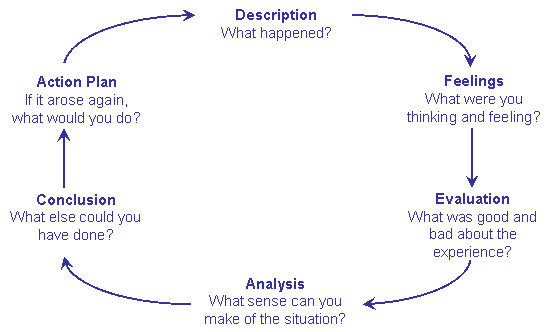
UKPSF AA1: Design and plan learning activities and/or programmes of study.
Description
Many of the students I will teach will already have their own thoughts/feelings and understanding of the topic and be able to engage with the topic due to being exposed to it daily and most of these students will be using the devices themselves. Tools in which student’s access information are changing and updating everyday which means we must conceptualise learning in a new way to facilitate learning (Prensky) which could include focussing on new tools (iPad, iPhone etc), finding information (own research), making meaning and creating. Teachers are no longer in charge of learning and are merely tools to help facilitate this and here lies the term, “partnering”. In the last 20 years technology has transformed our world and will continue to change it in ways that we are yet to fully understand so to prepare students for the world, we must change the way we teach and put the student in charge of their own learning as I have said previously, students do not learn from knowledge transfer alone. By using the Partnering Pedagogy, I simply set learning goals then coach and consult with the students on how they meet their goals rather than delivering a lecture. The assumptions that I made about my learners were that they were all operating at level 6/7 so would be proactive and experienced learners and will have a deep understanding of the education system and mobile technology, specifically mobile phones. The topic will not be new to the students as the subject will have undoubtedly impacted them, but they will not have fully explored the implications of this subject regarding learning. The session is employed to engage and extend existing thought in the students. My experience extends to teaching English as a Foreign Language to young students operating at levels 1-4 and supporting in GCSE classes so I had to adapt my teaching style in line with teaching levels 6-7. I employed student centred methods of learning and put them in charge of their own research meaning that they were actively involved in a process of meaning and knowledge construction as opposed to passively receiving information from me, the teacher.
Appendix A
Learning Outcomes
Identify positive outcomes of using mobile phones to further learning in higher education.
Evaluate the importance of these technological devices in school settings.
Devise ways in which mobile phones can be used to enhance learning in schools.
Appendix B
Microteaching Plan
|
Session Title: Exploring Mobile Phone Use in Schools. |
|
|
What assumptions have you made about your learners? |
My learners are understood to operate at level 7 so will be proactive and experienced learners and will have a deep understanding of the education system and mobile technology specifically mobile phones. The topic will not be new to many students as this will undoubtedly have impacted them personally at some point in their lives, but they may not have fully explored the implications of such on the classroom. This session is employed to engage and extend existing thought in the student. The students engaging in this class have not disclosed any learning difficulties such as dyslexia however the PowerPoint has been tailored to suit their needs with a strong colour background and appropriate font. |
|
Intended Learning Outcome: |
|
|
How will you deliver your session? |
This session will consist of a short presentation outlining the pros and cons of mobile phone use from the perspectives of school aged children and teachers with real-world feedback. A video will be included to give an example of young children’s understanding of mobile phones. Then students will create a poster devising ways in which mobile phones can be employed effectively in schools to enhance learning before discussing their reasons for this from the perspective of student and teacher. I have employed this approach to engage students and help them explore their ideas further as in Psychology, students touch upon a wide array of topics and are expected to interpret and develop theory, form a hypothesis and make observations. |
|
How will you assess that the learners have achieved the intended learning outcome? |
The students will be split into two groups with one group being asked to list positive uses of digital technology from a teacher’s perspective with the other group listing negative uses of mobile phones from a student perspective. This encourages students to interpret and explore their ideas on mobile phones in the classroom while extending their understanding of the role of the mobile phone in student’s lives. There will also be an opportunity for further discussion of their own thoughts at the end of the session. |
|
Time (mins) |
Details of Task |
Student Activity |
Resources |
|
6 |
Mini presentation Slides will summarise the importance of mobile phones, pros and cons of having them in class with feedback from students and teachers and watch a video on children talking about their mobile devices. |
Listening to the presentation |
Ppt slides and YouTube video |
|
4 |
Group Work A small activity asking how students use their own mobile phones will be conducted at the beginning of the presentation which will take no more than one minute. The students will then be divided into two groups, given a piece of paper each and asked to list the pros and cons of mobile phone use in schools.
|
This is an active part of the session in which students will engage in group discussion and compose a list outlining the positive and negative uses of mobile phones in schools which can in turn expand learning. |
Piece of paper each in which to compile their list and a pen in which to write it. Students will be timed to encourage them to meet deadlines. |
|
4 |
Student Feedback Each group will be given two minutes to discuss their list and then discuss if there is any overlap between the teacher and student lists, encouraging extended thought and exploring their own ideas.
|
Students will lead this part of the session by presenting their ideas for positive and negative uses of mobile phones in class. Students engage in group discussion exploring their beliefs and ideas. This will give students the opportunity to demonstrate they have met the learning outcomes that were set out. |
Students will be timed to encourage them to complete the task within the given timeframes. |
|
1 |
Time for questions about exploring the way we view mobile technology and how it can work alongside education to improve current practices. Left with a critical thinking question to further extend their thought. |
Students to engage in question and answer with student teacher. |
Anything students are not sure of to be explained in a way that they can understand. |
Feelings
I found the planning of the sessions difficult as I was unsure of the audience and how they would interpret the information and activities that they were given. I was using a more psychological approach regarding teaching by using partnering but was concerned that the students may not understand why I had used this approach and would not engage with the topic to meet the desired learning outcomes. I am used to teaching children online and face to face but never at this level and have normally stuck to planned sessions and not strayed from this which left me a little uncertain and made me lack confidence in my session and the learning outcomes I was trying to achieve.
Evaluation
The session was aimed at eliciting knowledge in the learners and promoted person-centred learning with students constructing knowledge and meaning from their experiences. The session was constructed to challenge, analyse and evaluate concepts which is the way that I learn as a psychologist but not the way that I impart knowledge as a teacher, this is very structured. I structured my session so that learning did not stop once the lecture was finished and ended with a question which would provoke thought in my students once they left class. The structure of the session allowed for the knowledge to be repeated and absorbed by the learners whilst giving time for discussion and development of their own ideas and ran at a pace sufficient for level 6 learners and above. I felt that I allowed sufficient time for information to be given to learners however I overran on my first session due to ongoing discussions throughout when people were engaging with the subject matter and found it hard to get back on track and feed the final information to the students. To enhance this experience further, I may have used some data from my own studies which were ongoing rather than using the video which wasn’t as relevant as the other information I provided.
Analysis
Upon reflection of the first microteaching session I found that I overran by a significant amount of time which affected the rest of my session and this was evident in my microteaching feedback. This was mainly due to me eliciting discussion throughout which aided their learning but hindered my teaching and I got behind and had to rush the last couple of slides and discussions due to running out of time. I felt that I met the needs of my learners and used the partnering technique to good effect, eliciting thought in my learners however I should have controlled the group a bit better and instead let the students continue to discuss around the subject. I set learning goals, coached and consulted with the students as they met them, and feedback suggested that this interaction was welcome, and students stated that they felt ‘supported’ in their learning. I attempted to support a large amount of learning styles with video, verbal explanations and incorporated practical activities also however there was a little too much text on some of the slides and this added to me significantly overrunning my initial 15 minutes by taking extra time to explain these points. I feel that I could have improved this session with less text and more controlled discussion and the feedback I received from my first microteaching session supports this.
Conclusion
In conclusion, I feel that my teaching sessions went well and that I improved upon my initial microteaching session and controlled the group discussion better. I had three learning outcomes which was a little ambitious but was able to meet these in my sessions and create several learning opportunities. Further planning needs to occur to ensure that learning outcomes are being met and suitable assessments are in place to measure these.
Action Plan
For each intended learning outcome there should be a clear link to an activity in the assessment of this being achieved can be measured.
UKPSF AA2: Teaching/Supporting Learning
Description
Postgraduate learners are more self-directed learners and spend a lot of time researching around subjects, so my method of teaching should support this. When teaching a class (age dependant), I would provide students with some form of background information on the topic and then ask them to tell me what they know of the subject before researching it themselves and presenting their findings to the class at the end through whatever medium they feel necessary. This effectively shares their knowledge and provides support for the student, putting them in charge of their learning. With each piece of research, I found students to develop upon their existing knowledge, this was evident with increased exam scores. I have found this to work for students who may have learning/behavioural difficulties as the class provides support but also encourages them to engage with the majority of teaching methods to see what works best for them. PhD students tend to work alone on projects, so I was concerned how students from different disciplines working together would approach my task as it was basic but measured the learning outcomes that I set out.
Vygotsky (1978) stressed the importance of social interaction in learning, he believed that community played a fundamental role in the development of cognition and was central to the process of ‘making meaning’. Therefore, to facilitate this type of learning, I will encourage discussion and will signpost the learners if they become distracted.
Feelings
In the first session, I felt I did not control discussion and this prevented me from keeping within given timeframes and got me off track. In the second session, I controlled the discussions and stuck to the allotted time for each activity to maximise the learning potential for my session. I knew that my chosen subject would be up for debate as most people are against using mobile phones and smart technology in classroom settings however all students had some form of smart phone within their reach and perhaps hadn’t explored the possibilities or pros and cons in detail. In the first microteaching session I followed someone who talked about the negatives of relying on technology so following this provided me the opportunity to expand on their research and compare mine in relation to that. I was able to garner interest in the topic and tweaked my microteaching sessions accordingly. Within the two sessions I was able to engage learners through various mediums but also provoke further discussion on smart technologies in schools.
Evaluation
The feedback received from my colleagues was useful and helped me to improve my second microteaching session to meet the needs of my learners. Feedback received focussed on timekeeping, keeping my students in check and signposting and offered up suggestions on how to develop my activities further which was great and gave me something to work on for the future. Positive feedback included good discussions, good activities, good PowerPoint usage and great engagement with the students. The second microteaching session I felt was managed better however two of the group felt that I had too many learning outcomes although the three were interlinked but nevertheless they were achieved, and the audience was engaged. I felt that I improved on timekeeping, organisation and content by not relying on the PowerPoints and using them in the background. I discussed more around the topic but in my opinion, I still had too much literature on the slides and it may have distracted from what I was trying to teach and appear that I am trying to sway students in a certain way. Working in education myself, I am very good at communicating and can adapt accordingly to situation and student whilst being able to support several learning styles to use alongside this e.g. diagrams, video, gesture etc.
Analysis
Upon completion of the first microteaching session, I realised that by not controlling the discussion I was setting my students up to fail and this meant that not only did I overrun and lose track of time, but I was not able to focus on the key points for the discussion and ended up rushing the last few slides. In doing this, I was not meeting the needs of my students and my primary focus had been to fill my session with lots of information, but this got lost when I rushed the last few slides. I supported a wide variety of learning styles in both presentations however the video was perhaps not necessary upon reflection as it was flagged up that it may not be relevant. The video was used to show the innocence of children and what they thought the pros and cons of mobile devices were however I can see how this message may be lost and if I was to re-do the session I would choose a more appropriate video.
Conclusion
In conclusion, I feel that I engaged my audience and met the learning outcomes that I set out to achieve. I feel that both sessions were successful however I would change the video and put less text in my PowerPoints so that students can engage with the activities better without focussing on the board. My teaching style is informative, supporting and fun but I must remember to control groups and monitor time better in the future.
Action Plan
I am a kinaesthetic learner and social psychologist, this is evident in my presentations and teaching style. I want students to interact with their environments to further their learning rather than me stand behind a board talking at them however at times I was stood beside a board discussing the information on my slides. Moving forward, I would improve on my PowerPoints by reducing the amount of information as there needs to be a learner centred balance between talking e.g. more what students are doing and less about what I am doing I am putting on slides, this would help me to engage better with my environment.
UKPSF AA5
TALENT UNIT/CPD
Description
The TALENT CPD has been an enjoyable way of exploring different learning and teaching styles and has led me to find a good balance for the delivery of my research. Learning should occur naturally and be equal parts student and teacher (Fawbert, 2008) to facilitate this although this can be dependent on what level the learners are at.
Feelings
I feel grateful for this opportunity and have learned a lot e.g. things that I thought would work have maybe not been as successful as things that I thought wouldn’t, so it is definitely worth reflecting on these experiences with a view to improve and develop with the students. I have used the TALENT module to step back from teaching in schools to evaluate my teaching practice and ensure I am providing the best learning experiences possible. I have spent more time since completing the TALENT module engaging with my class through some of their mediums e.g. music and have found opportunities to incorporate these things into their lessons, for example; write a rap about A Christmas Carol.
Evaluation
Studying the TALENT module has helped me isolate learning outcomes to ensure that these are being met regularly. It has also shown me how to make learning a more positive experience for staff and students alike and I too, intend to engage fully with any classes I take by interacting with the literature and by setting and measuring my own learning outcomes. I feel that this course has provided me with the tools to further my career and I will look into ways that I can use these skills in my research and throughout my PhD.
Conclusion
I will use the TALENT module to reflect on my teaching and planning and use the reflective cycle to evaluate classes I may have taught to make sure I am doing it to the best of my ability and making improvements where needed.
Action Plan
I will continue to teach and will welcome any feedback I receive as well as offering up constructive feedback to others.
SMART
|
Specific |
Measurable |
Aspirational |
Realistic |
Time-bound |
|
To conduct a lecture in the next academic year using proven teaching styles according to levels engaging students. |
Observation by staff to ensure intended learning outcomes are being met. |
It will allow me to get experience teaching at a higher level and enhance my teaching skills. |
I will need the consent and support of a lecturer to ensure I am meeting the intended learning outcomes. |
Within the next 18 months as I have chosen to suspend my studies temporarily. |
|
To ensure that the intended learning outcomes are being met in every class I undertake in secondary school, pupil referral units and online. |
Ensure that each intended learning outcome has an activity that can be measured. |
This will ensure that I am educating to the best of my ability and that I am able to identify if someone is struggling with the work and act accordingly to support them. |
To review teaching plans and make sure that they all have clear learning outcomes and activities. |
On-going |
Appendices
Appendix C
PowerPoint Slides Week 1
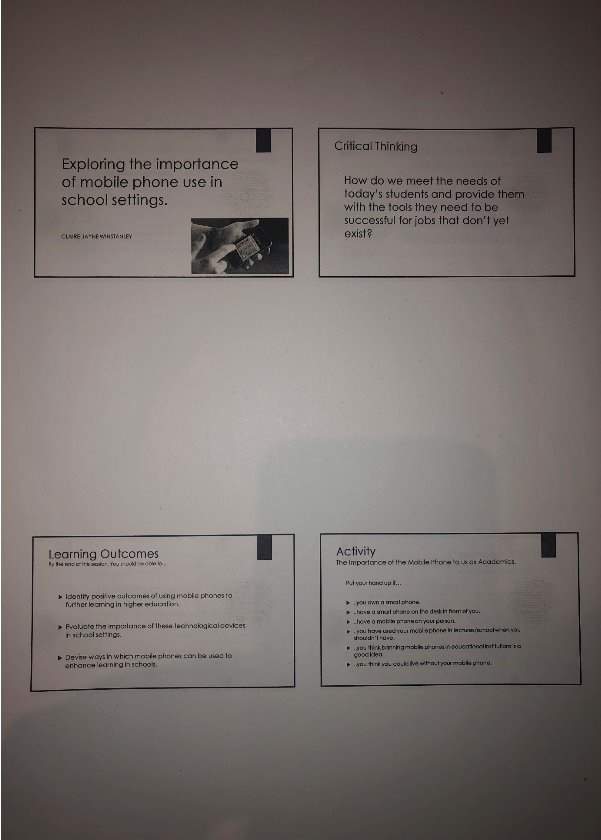

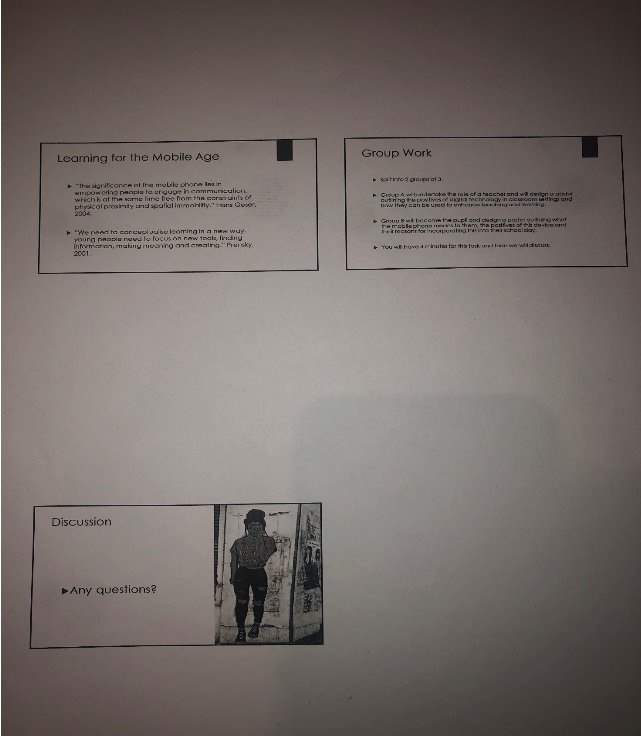
Appendix D
Micro Teaching Session 1
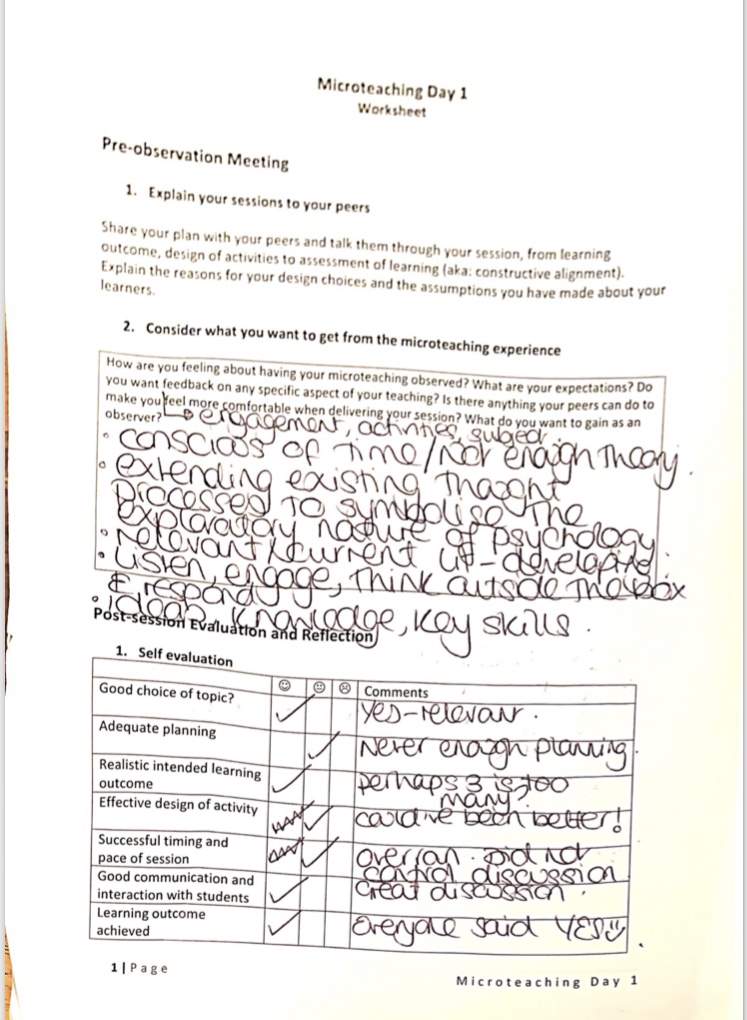
Appendix E
Microteaching Session 2

Appendix F
Week 1 Microteaching Feedback

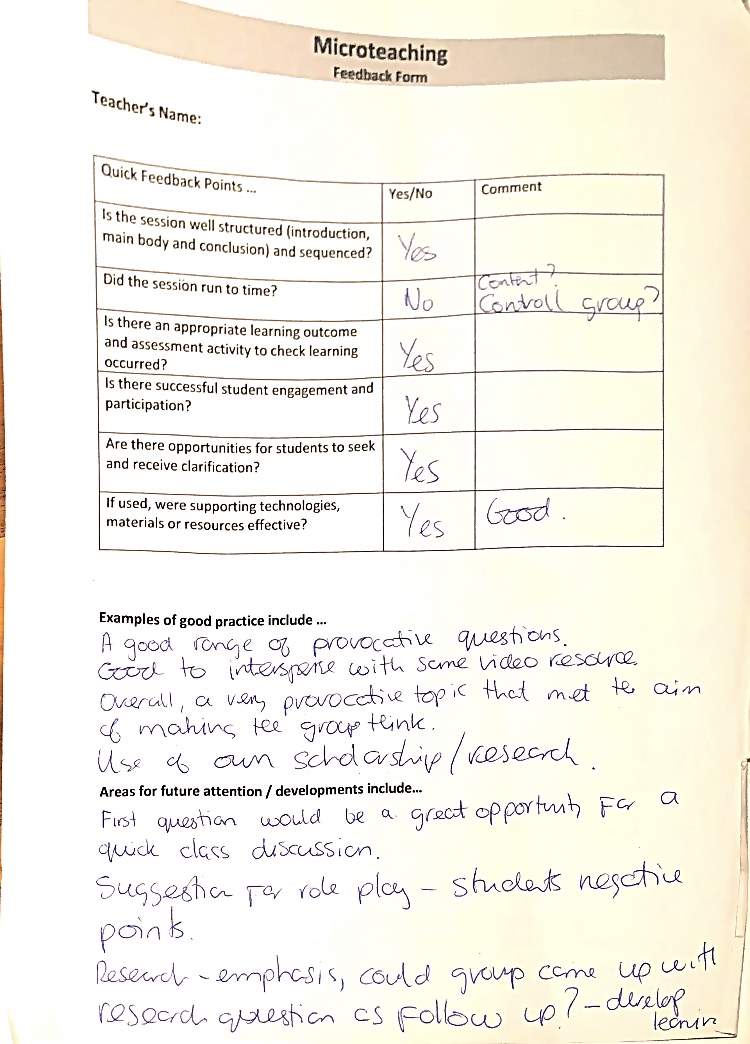
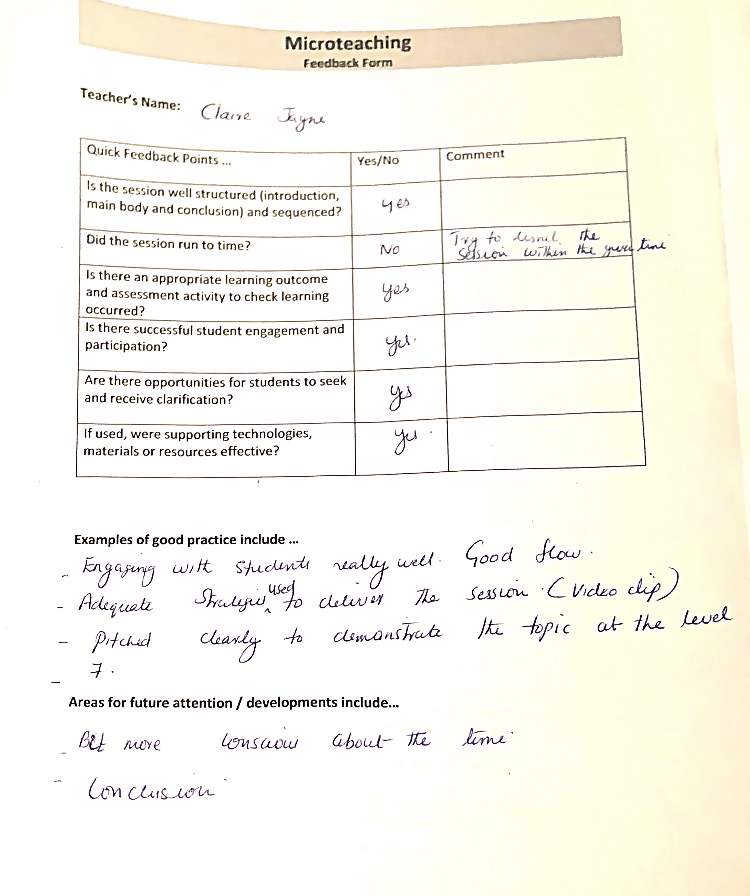
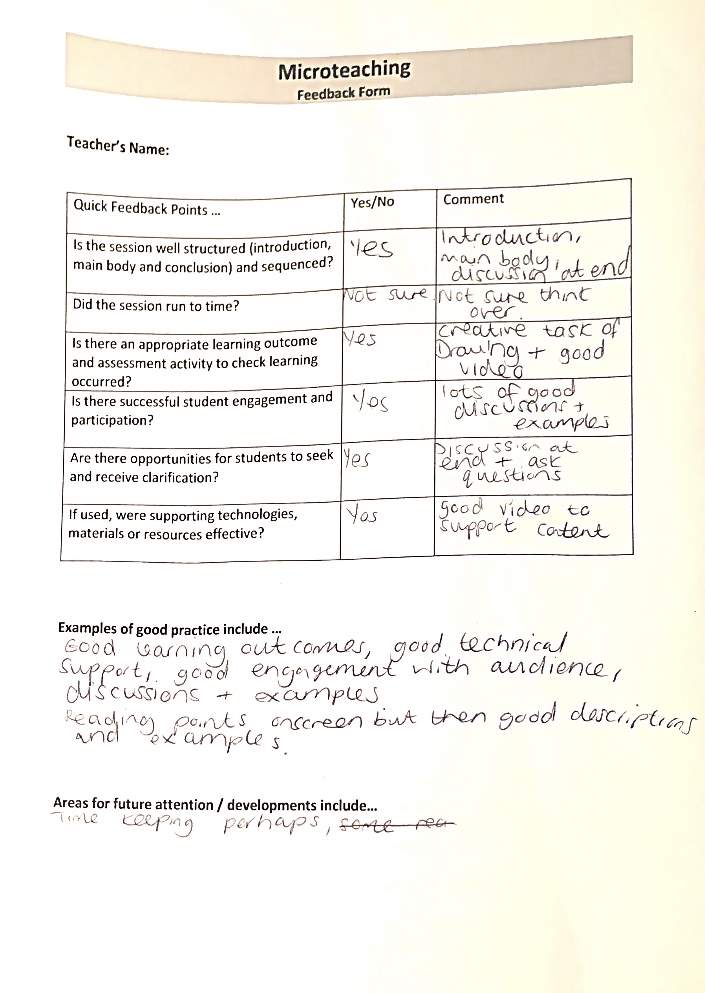
Appendix G
Micro Teaching Feedback Week 2
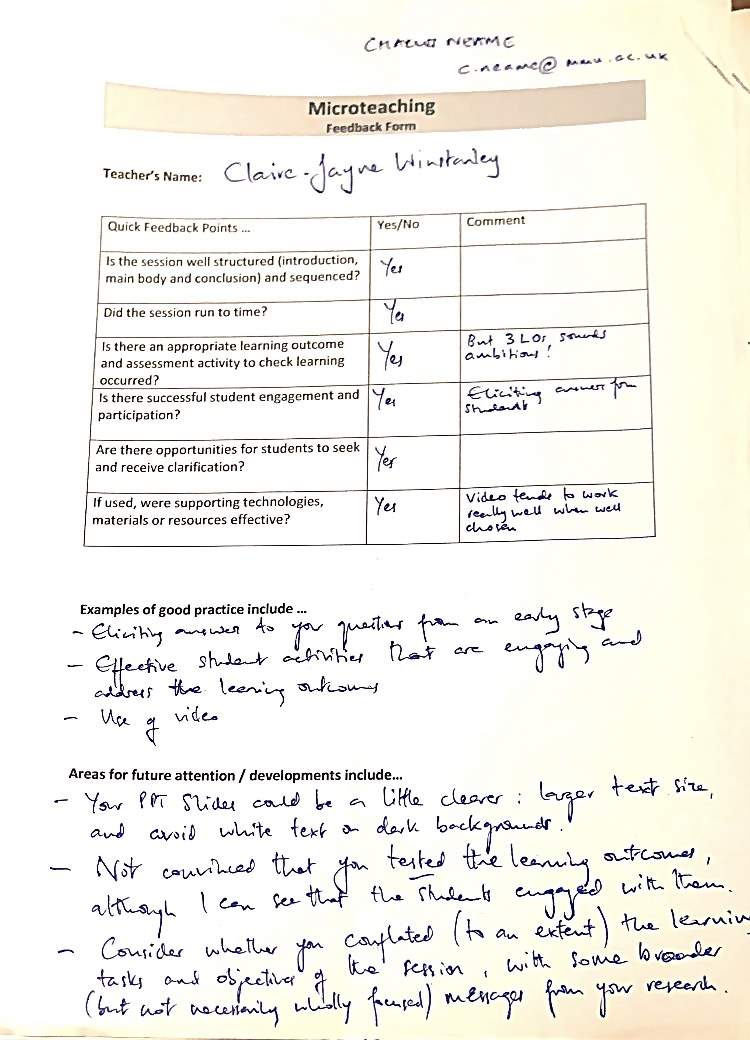
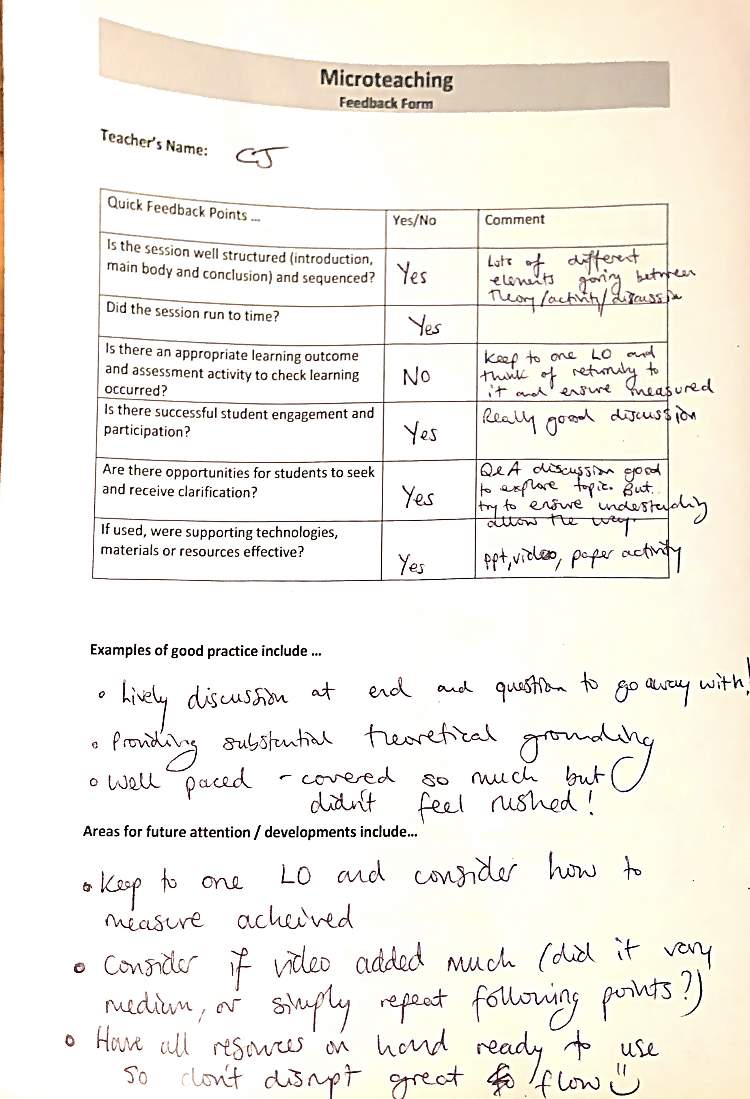

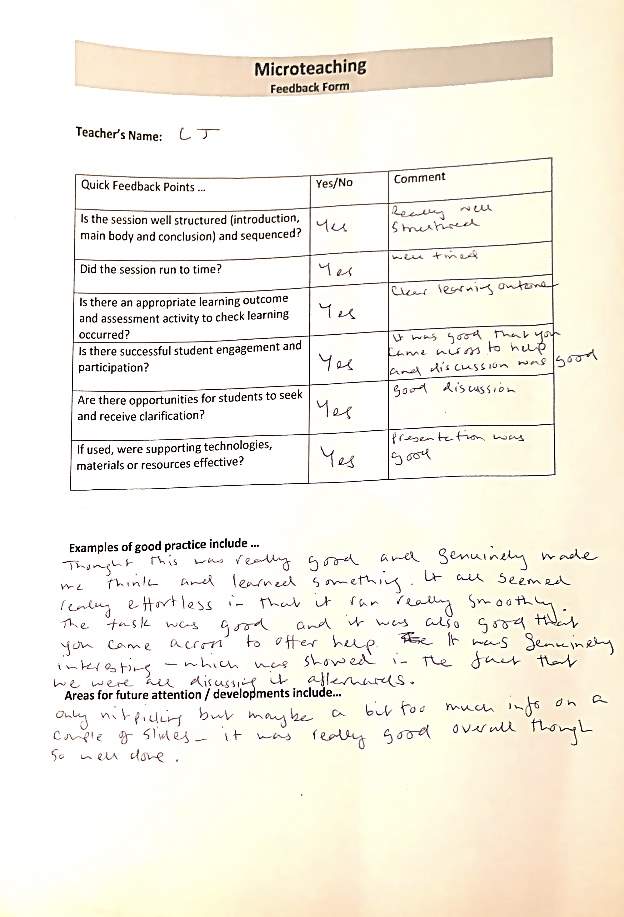
Appendix
Cite This Work
To export a reference to this article please select a referencing stye below:
Related Services
View allDMCA / Removal Request
If you are the original writer of this essay and no longer wish to have your work published on UKEssays.com then please click the following link to email our support team:
Request essay removal


